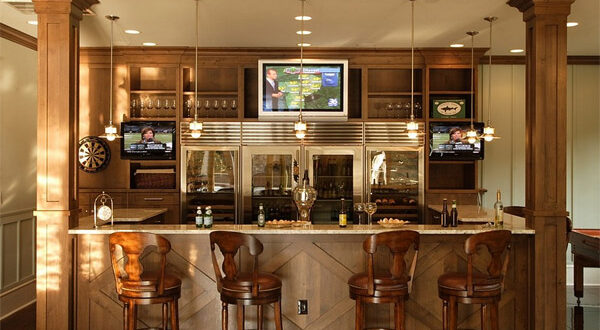Introduction: Elevate Your Home with a Stunning Bar Design
Imagine unwinding after a long day with a perfectly crafted cocktail, right in the comfort of your own home. No crowded bars, no waiting for service – just you, your favorite drink, and a space that reflects your personal style. That’s the allure of a well-designed home bar. More than just a place to store liquor, a home bar is a statement piece, a social hub, and a reflection of your personality. Whether you envision a sleek, modern setup or a cozy, rustic retreat, the possibilities are endless. This comprehensive guide will walk you through everything you need to know to design and create the perfect house bar, from initial planning to stocking your shelves.
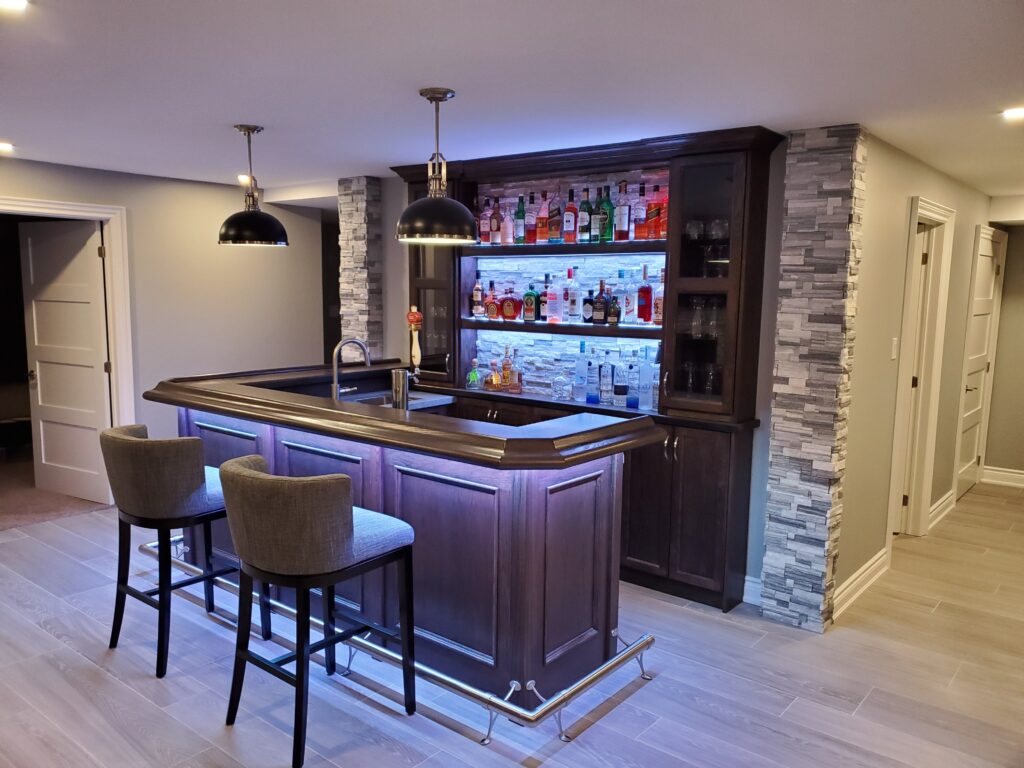
Why Invest in a Home Bar? The Perks Beyond the Drinks
Before diving into the design details, let’s consider the compelling reasons to invest in a home bar:
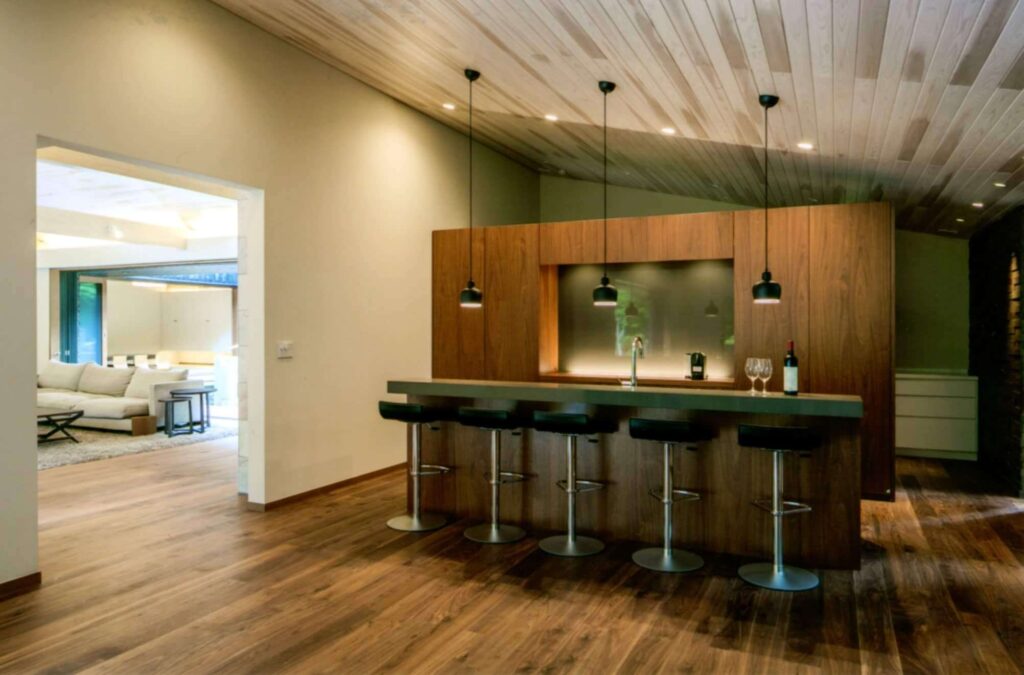
- Convenience: Enjoy your favorite drinks whenever you want, without leaving the house. No need to worry about designated drivers or expensive taxi fares.
- Cost-Effectiveness: While the initial investment might seem significant, a home bar can save you money in the long run compared to frequenting bars and restaurants.
- Personalization: Design your bar to perfectly match your taste and style. Choose the colors, materials, and accessories that resonate with you.
- Entertainment: Impress your guests with handcrafted cocktails and a dedicated space for socializing. A well-designed bar creates a welcoming and enjoyable atmosphere.
- Increased Home Value: A well-executed home bar can be a desirable feature for potential buyers, potentially increasing the resale value of your property.
- A Creative Outlet: Experiment with new recipes, learn about mixology, and express your creativity through the art of cocktail making.
Planning Your Perfect Bar: Key Considerations
The first step in creating your dream home bar is careful planning. Consider these crucial factors to ensure your bar meets your needs and fits seamlessly into your home:
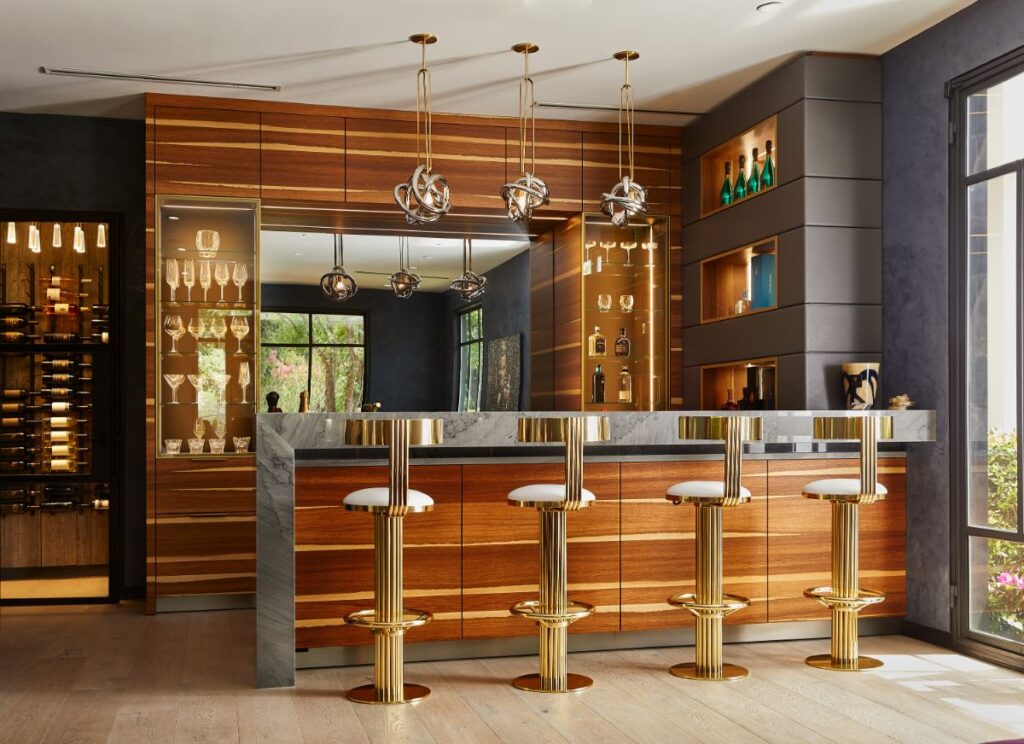
1. Space Allocation: Where Will Your Bar Live?
The available space will heavily influence your bar’s design. Consider these options:
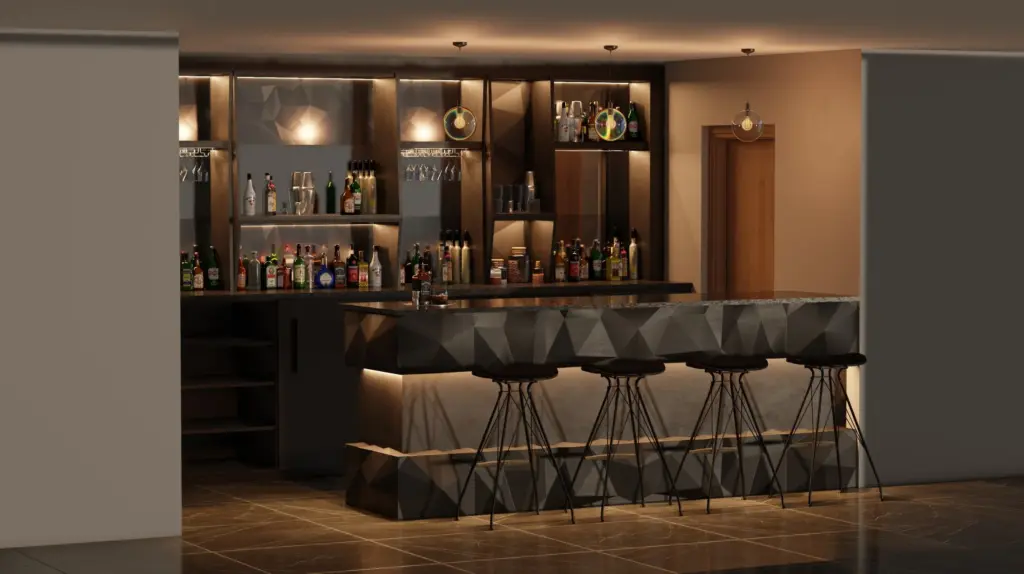
- Dedicated Room: If you have a spare room, transforming it into a dedicated bar area offers the most flexibility. You can create a fully functional space with ample storage, seating, and entertainment options.
- Basement Bar: Basements are often ideal for home bars, providing a relaxed and secluded atmosphere. Consider moisture control and proper ventilation when designing a basement bar.
- Living Room Bar: Integrate a bar into your living room for a seamless transition between entertaining and relaxing. A stylish bar cabinet or a built-in bar can be a great addition to your living space.
- Dining Room Bar: A bar in the dining room can be perfect for pre-dinner cocktails or after-dinner drinks. Consider a sleek and elegant design that complements your dining room decor.
- Kitchen Bar: Incorporating a bar into your kitchen island or creating a separate bar area within the kitchen can be a convenient and practical option.
- Outdoor Bar: If you enjoy outdoor entertaining, an outdoor bar can be a fantastic addition to your patio or deck. Choose weather-resistant materials and consider adding a grill or outdoor kitchen.
- Under Stairs Bar: Don’t let that space under the stairs go to waste, create an instant home bar.
2. Budgeting: How Much Are You Willing to Invest?
Establish a realistic budget before you start designing your bar. The cost can vary significantly depending on the size, materials, and features you choose. Factor in the cost of:
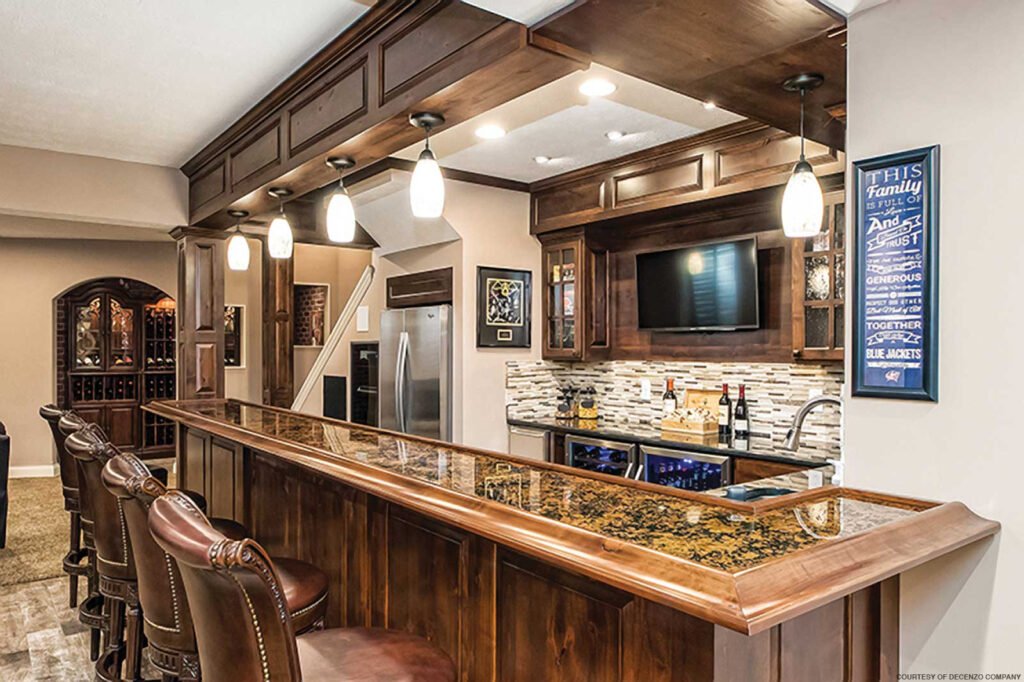
- Construction or Renovation: If you’re building a bar from scratch or renovating an existing space, factor in the cost of labor, materials, and permits.
- Bar Furniture: Bar stools, tables, and cabinets can range in price depending on the style and quality.
- Appliances: Consider the cost of a refrigerator, ice maker, wine cooler, and other appliances.
- Barware and Accessories: Factor in the cost of glasses, shakers, strainers, and other essential bar tools.
- Liquor and Supplies: Don’t forget to budget for your initial stock of liquor, mixers, and garnishes.
- Décor and Lighting: Set aside a budget for decorative items and lighting fixtures to create the desired ambiance.
3. Style and Ambiance: What’s Your Bar’s Vibe?
Define the style and ambiance you want to create in your bar. Consider these popular styles:
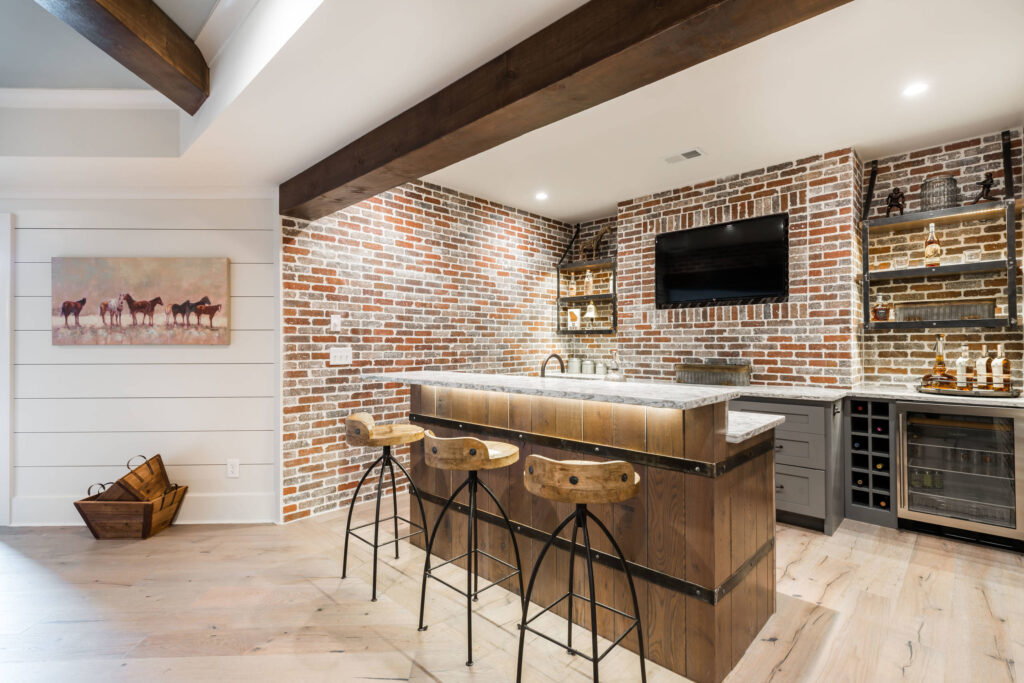
- Modern: Sleek lines, minimalist design, and contemporary materials like stainless steel, glass, and concrete.
- Rustic: Warm and inviting with natural materials like wood, stone, and brick.
- Classic: Elegant and sophisticated with traditional furniture, rich colors, and ornate details.
- Tropical: Relaxed and vibrant with bright colors, natural textures, and tropical-themed decor.
- Industrial: Raw and edgy with exposed brick, metal accents, and vintage-inspired furniture.
- Art Deco: Luxurious and glamorous with geometric patterns, bold colors, and metallic finishes.
- Mid-Century Modern: A retro and stylish look with clean lines, organic shapes, and warm wood tones.
4. Functionality: How Will You Use Your Bar?
Consider how you plan to use your bar. Will it be primarily for entertaining guests, or will it be a personal retreat? Will you be making elaborate cocktails, or will you mostly be serving beer and wine? Your answers to these questions will help you determine the features and functionality you need.
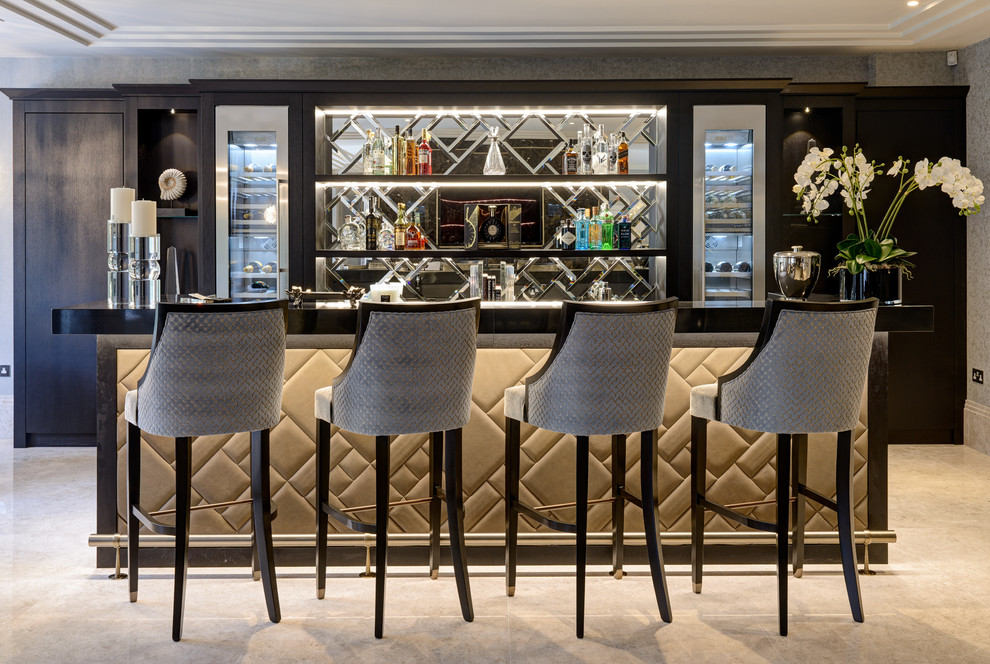
- Seating: Decide how many people you want to accommodate at the bar. Consider bar stools, chairs, and sofas.
- Storage: Plan for ample storage for liquor bottles, glassware, and bar tools. Consider cabinets, shelves, and drawers.
- Work Space: Ensure you have enough counter space for preparing drinks. Consider adding a sink for easy cleanup.
- Appliances: Determine which appliances you need, such as a refrigerator, ice maker, wine cooler, and blender.
- Entertainment: Consider adding a TV, sound system, or game table to enhance the entertainment experience.
- Lighting: Proper lighting is essential for creating the right ambiance. Consider ambient lighting, task lighting, and accent lighting.
Design Elements: Bringing Your Bar to Life
Once you have a solid plan in place, it’s time to focus on the design elements that will bring your bar to life:
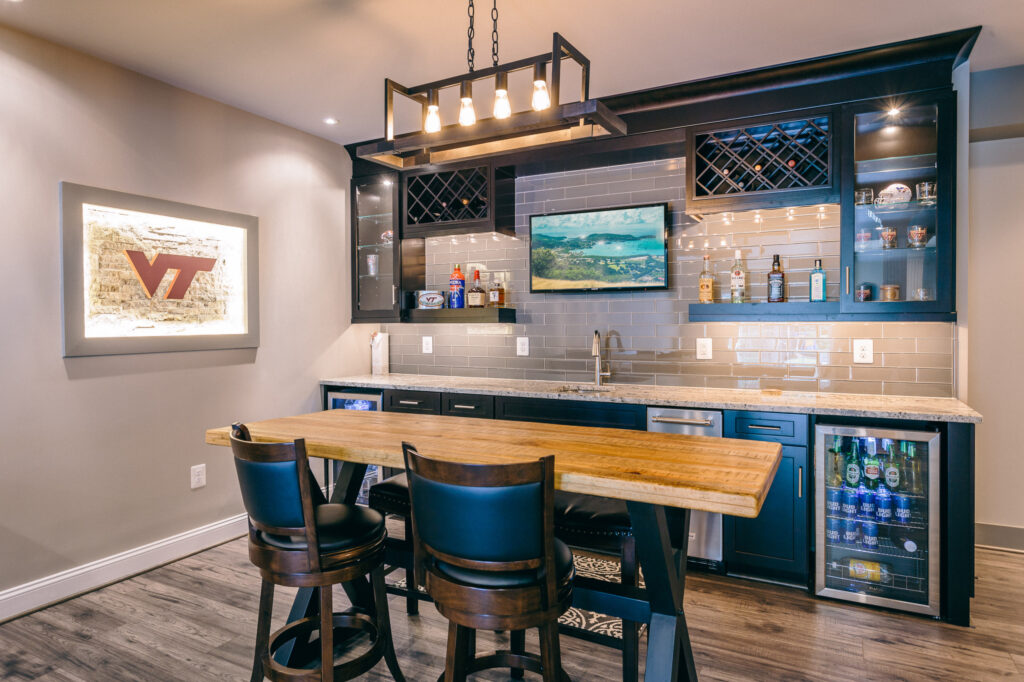
1. Bar Counter: The Heart of Your Bar
The bar counter is the focal point of your bar. Choose a material that complements your style and is durable enough to withstand frequent use. Popular options include:
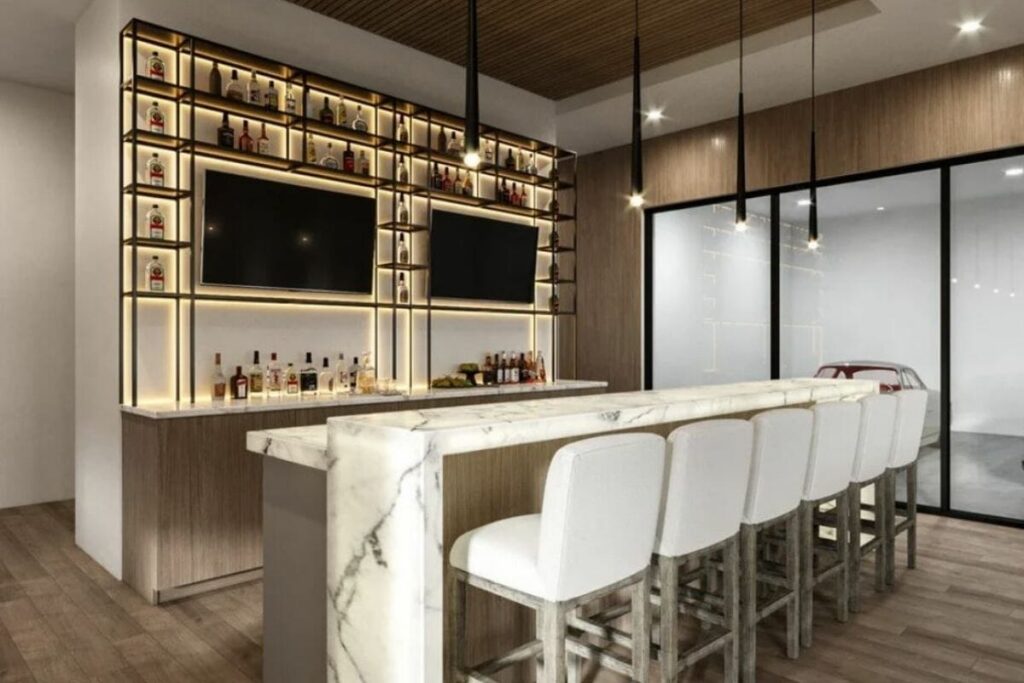
- Wood: A classic and versatile choice that can be stained or painted to match your decor.
- Granite: A durable and elegant option that is resistant to scratches and stains.
- Quartz: A low-maintenance and non-porous option that comes in a variety of colors and patterns.
- Concrete: A modern and industrial option that can be customized with various finishes and colors.
- Stainless Steel: A sleek and durable option that is easy to clean and maintain.
- Epoxy Resin: Allowing for artistic and unique designs by embedding items in the resin, creating a one-of-a-kind bar top.
Consider the height and depth of your bar counter. A standard bar height is 42 inches, but you can customize it to suit your needs. The depth of the counter should be at least 20 inches to provide enough space for preparing drinks.
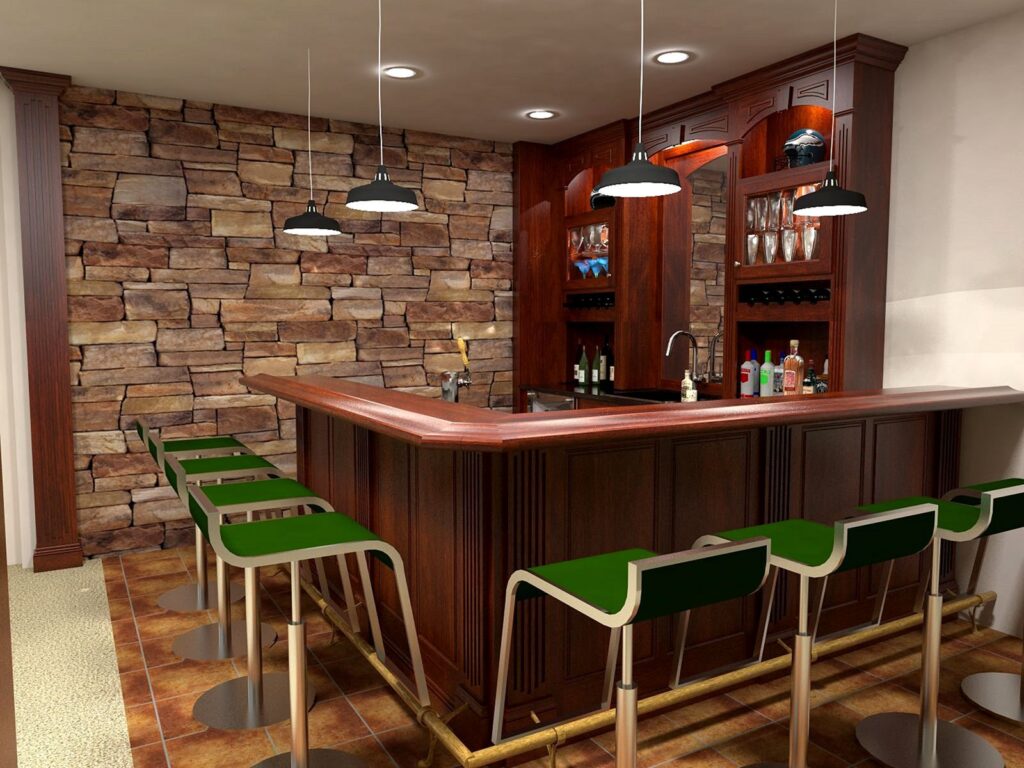
2. Backsplash: Adding Style and Protection
The backsplash is the area behind the bar counter that protects the wall from spills and splashes. It’s also an opportunity to add style and personality to your bar. Consider these backsplash options:
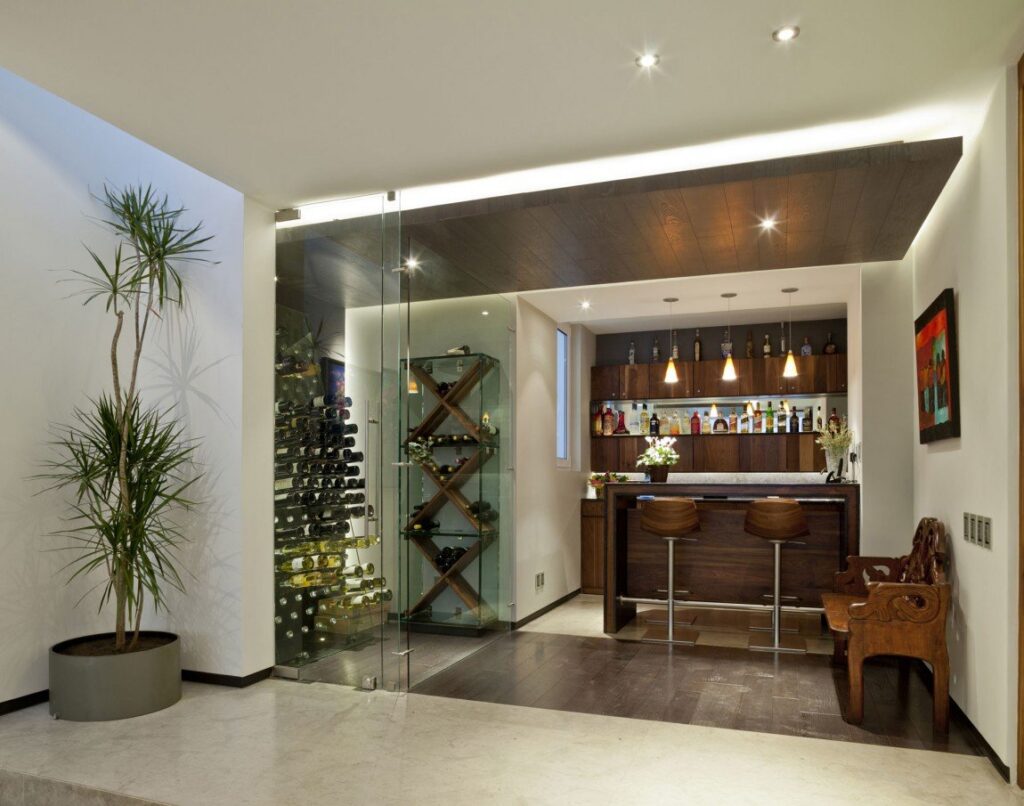
- Tile: A versatile and affordable option that comes in a wide variety of colors, patterns, and materials.
- Glass: A sleek and modern option that is easy to clean and maintain.
- Stone: A natural and rustic option that adds texture and warmth to your bar.
- Mirror: A glamorous and reflective option that can make your bar appear larger and brighter.
- Wood: Coordinate the backsplash with your bar counter material.
3. Shelving and Storage: Keeping Everything Organized
Ample shelving and storage are essential for keeping your bar organized and clutter-free. Consider these storage options:
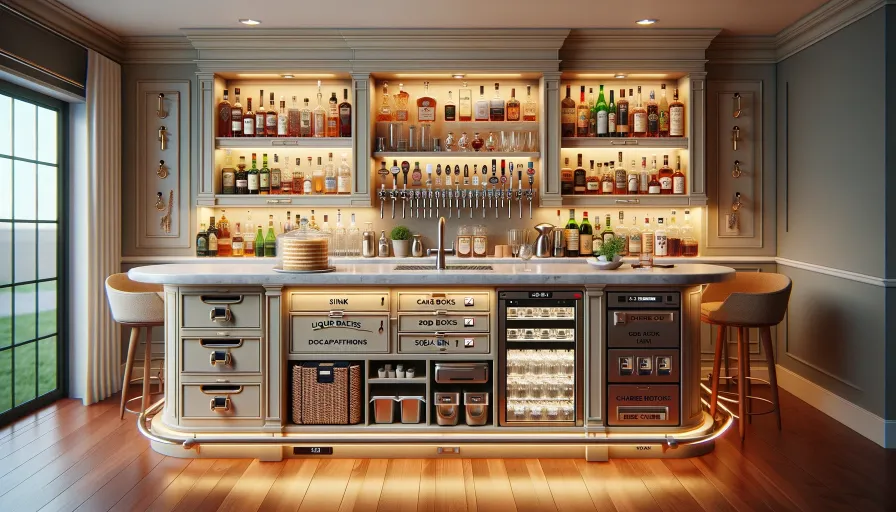
- Cabinets: Enclosed storage for liquor bottles, glassware, and bar tools.
- Shelves: Open storage for displaying liquor bottles, glassware, and decorative items.
- Drawers: Convenient storage for small items like corkscrews, bottle openers, and cocktail napkins.
- Wine Racks: Specialized storage for wine bottles.
- Glass Racks: Hanging racks for storing wine glasses and champagne flutes.
Consider incorporating a mix of open and closed storage to create a balanced and functional space. Use open shelves to display your favorite liquor bottles and glassware, and use cabinets and drawers to store less attractive items.

4. Lighting: Setting the Mood
Lighting plays a crucial role in creating the right ambiance in your bar. Consider these lighting options:
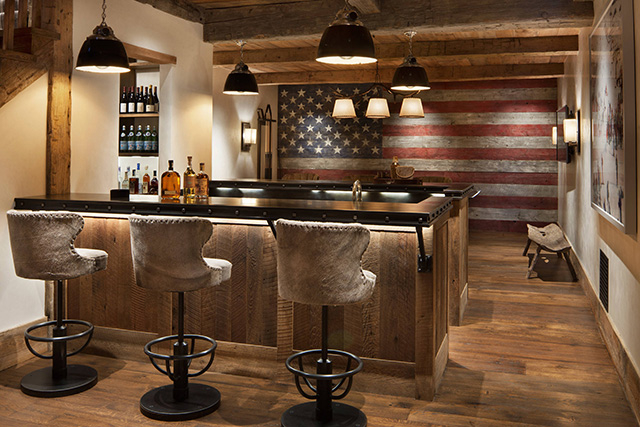
- Ambient Lighting: Provides overall illumination for the space. Consider recessed lighting, chandeliers, or pendant lights.
- Task Lighting: Provides focused light for specific tasks, such as preparing drinks. Consider under-cabinet lighting or spotlights.
- Accent Lighting: Highlights specific features, such as artwork or liquor bottles. Consider strip lighting, spotlights, or decorative lamps.
Use a combination of different types of lighting to create a layered and dynamic effect. Dimmer switches can also be used to adjust the lighting to suit different moods and occasions.

5. Seating: Comfort and Style
Choose seating that is comfortable and stylish. Consider these seating options:
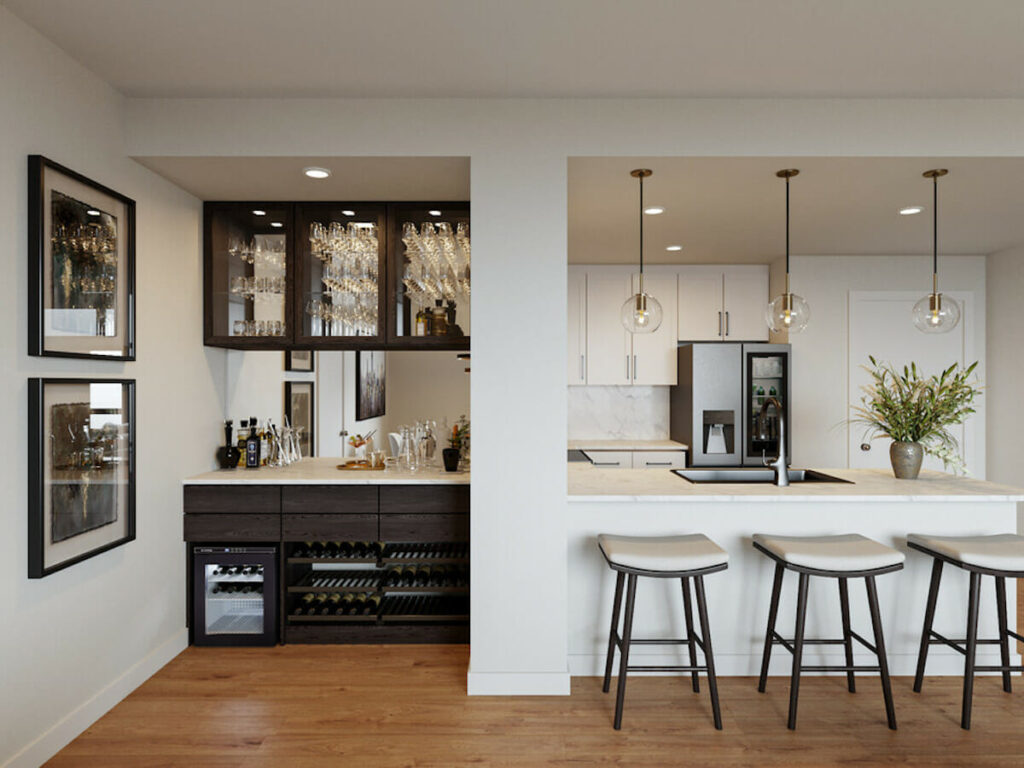
- Bar Stools: A classic choice for bar seating. Choose stools that are the right height for your bar counter and have comfortable seats and backrests.
- Chairs: A more formal option for bar seating. Choose chairs that are comfortable and stylish and complement your bar decor.
- Sofas: A comfortable and relaxed option for lounging. Choose sofas that are durable and easy to clean.
- Benches: A space-saving option for seating multiple people. Choose benches that are comfortable and stylish and complement your bar decor.
Consider the height of your bar counter when choosing seating. Bar stools typically range in height from 28 to 32 inches, while counter stools range in height from 24 to 27 inches.

6. Appliances: Enhancing Functionality
Consider adding appliances to enhance the functionality of your bar. Popular options include:
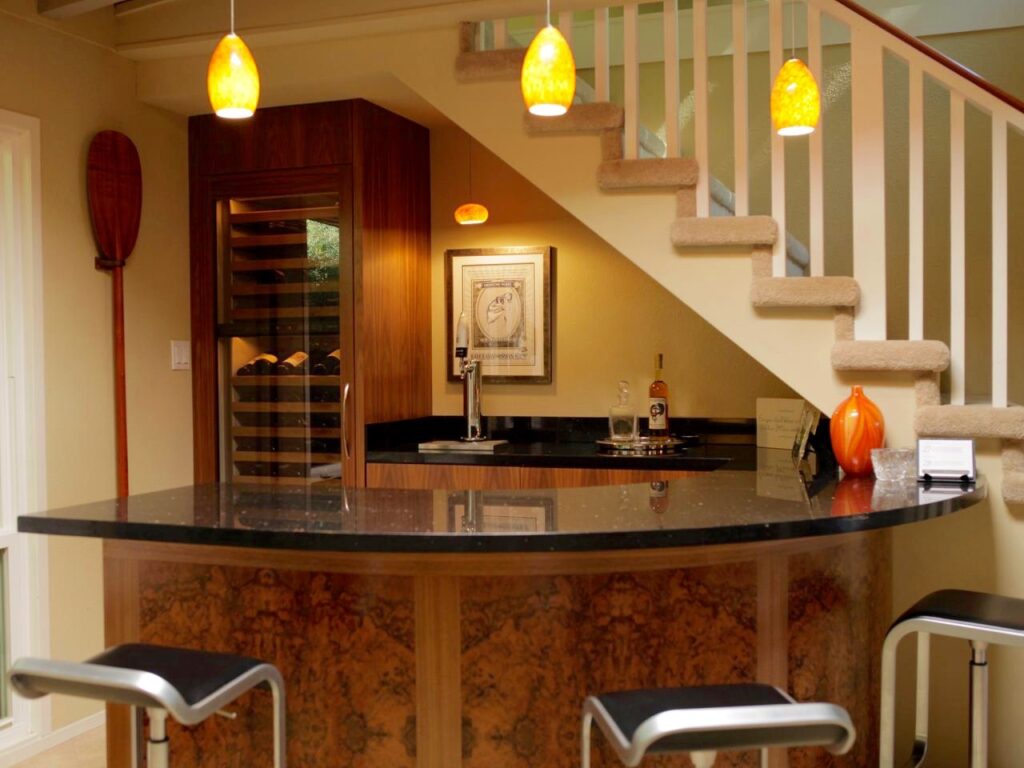
- Refrigerator: Keeps drinks and mixers cold.
- Ice Maker: Provides a steady supply of ice for cocktails.
- Wine Cooler: Stores wine at the optimal temperature.
- Blender: Makes smoothies and blended cocktails.
- Dishwasher: Makes cleanup easy.
- Kegerator: Dispenses draft beer.
Choose appliances that are the right size for your bar and are energy-efficient.
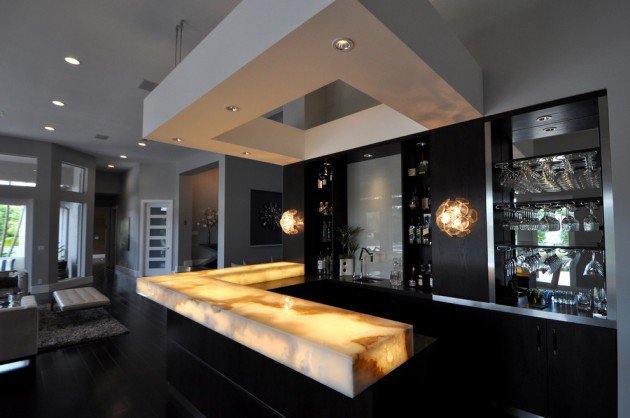
7. Decor and Accessories: Adding Personality
Add decor and accessories to personalize your bar and create the desired ambiance. Consider these options:
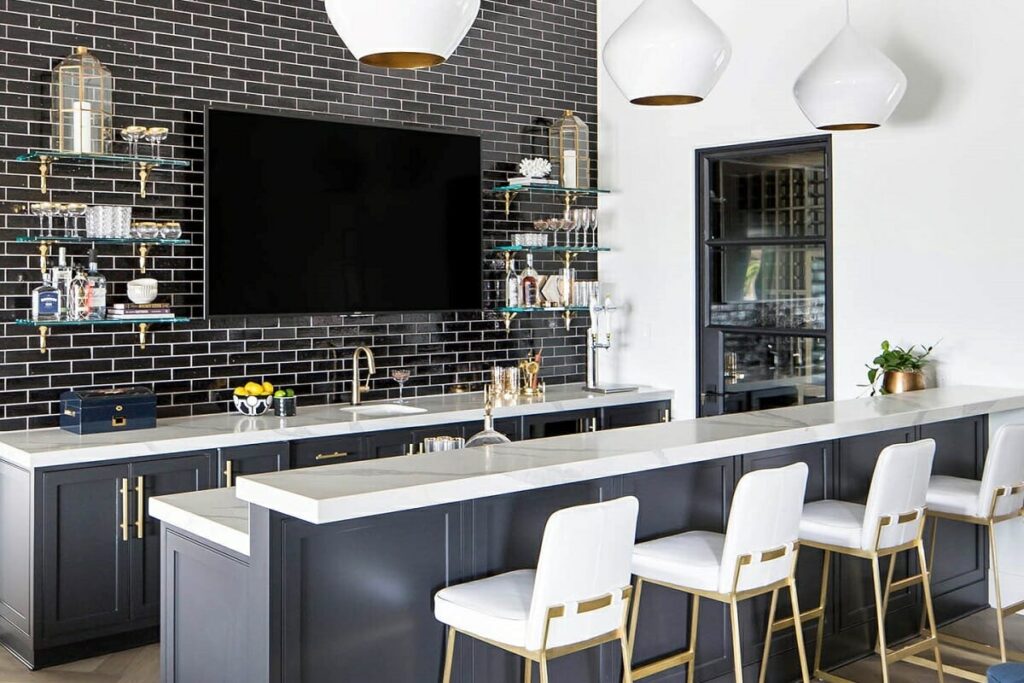
- Artwork: Hang paintings, prints, or photographs to add visual interest to your bar.
- Mirrors: Use mirrors to make your bar appear larger and brighter.
- Plants: Add greenery to your bar to create a fresh and inviting atmosphere.
- Decorative Objects: Display decorative objects like sculptures, vases, and candles to add personality to your bar.
- Barware: Choose stylish and functional barware, such as glasses, shakers, strainers, and jiggers.
- Neon Signs: Create a fun, retro vibe with custom neon signs.
- Memorabilia: Display collectable items like vintage beer signs or framed concert posters.
Choose decor and accessories that reflect your personal style and complement your bar’s overall design.
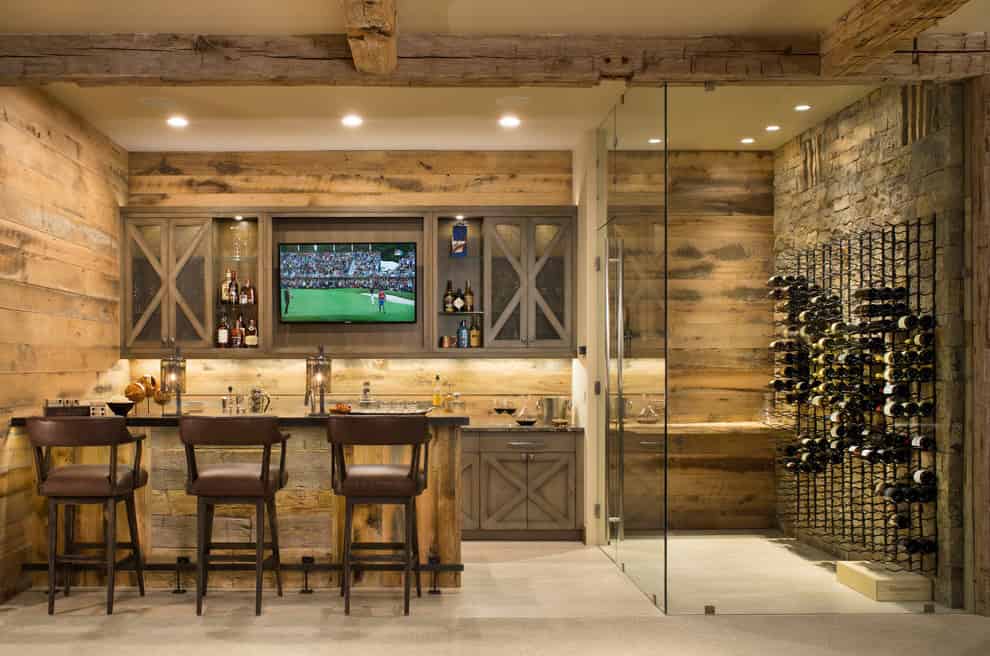
Essential Barware: Stocking Your Bar for Success
No home bar is complete without the right barware. Here’s a list of essential tools and glassware to get you started:
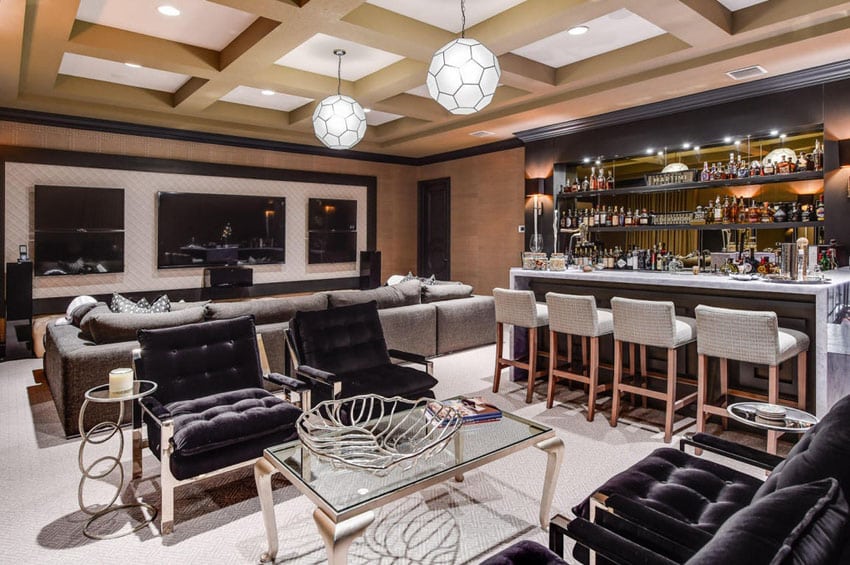
Bar Tools
- Cocktail Shaker: For mixing cocktails that require chilling and dilution.
- Jigger: For measuring ingredients accurately.
- Strainer: For straining cocktails into glasses.
- Muddler: For muddling fruits and herbs.
- Bar Spoon: For stirring cocktails and layering ingredients.
- Bottle Opener: For opening beer and soda bottles.
- Corkscrew: For opening wine bottles.
- Ice Tongs: For transferring ice into glasses.
- Citrus Juicer: For squeezing fresh citrus juice.
- Peeler: To create citrus twists for garnishes.
Glassware
- Highball Glasses: For serving tall cocktails like gin and tonic.
- Rocks Glasses: For serving cocktails on the rocks like Old Fashioneds.
- Martini Glasses: For serving martinis and other classic cocktails.
- Coupe Glasses: For serving cocktails and sparkling wine.
- Wine Glasses: For serving red and white wine.
- Champagne Flutes: For serving champagne and sparkling wine.
- Pilsner Glasses: For serving pilsner beer.
- Shot Glasses: For measuring and serving shots.
Stocking Your Bar: The Liquor Cabinet Essentials
Now that you have the right barware, it’s time to stock your bar with the essential liquors, mixers, and garnishes. Here’s a list of must-have items:
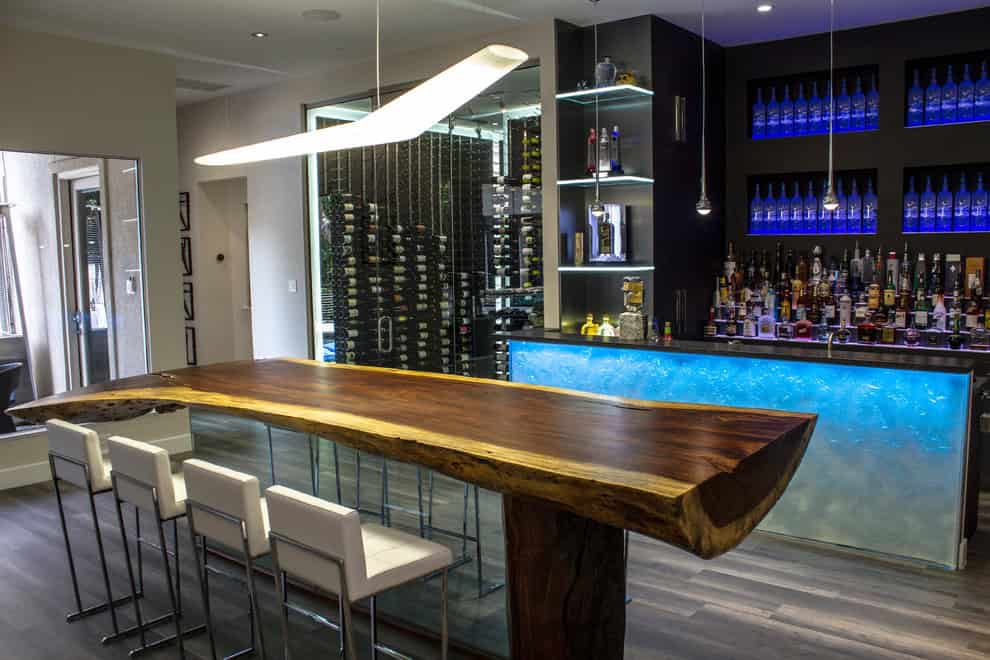
Liquors
- Vodka: A versatile spirit that can be used in a wide variety of cocktails.
- Gin: A botanical spirit that is essential for classic cocktails like gin and tonic.
- Rum: A sweet spirit that is used in tropical cocktails like daiquiris and mojitos.
- Tequila: A Mexican spirit that is used in margaritas and tequila sunrises.
- Whiskey: A broad category of spirits that includes bourbon, scotch, and rye.
- Brandy: A spirit distilled from wine or fruit.
- Liqueurs: Sweetened spirits that add flavor and complexity to cocktails. (e.g., Triple Sec, Amaretto, Coffee Liqueur)
Mixers
- Club Soda: For adding fizz to cocktails.
- Tonic Water: For mixing with gin and vodka.
- Ginger Ale: For mixing with whiskey and rum.
- Cola: For mixing with rum and whiskey.
- Juices: Orange juice, cranberry juice, pineapple juice, lime juice, and lemon juice.
- Simple Syrup: A sweetener made from sugar and water.
- Bitters: Adds depth and complexity to cocktails.
Garnishes
- Citrus Wedges: Lime, lemon, and orange wedges for garnishing cocktails.
- Olives: For garnishing martinis.
- Cherries: For garnishing Manhattans and other cocktails.
- Mint Sprigs: For garnishing mojitos and other cocktails.
- Salt: For rimming margarita glasses.
- Sugar: For rimming cocktail glasses.
Expert Tips for Creating the Ultimate Home Bar
Here are some additional tips to help you create the ultimate home bar:
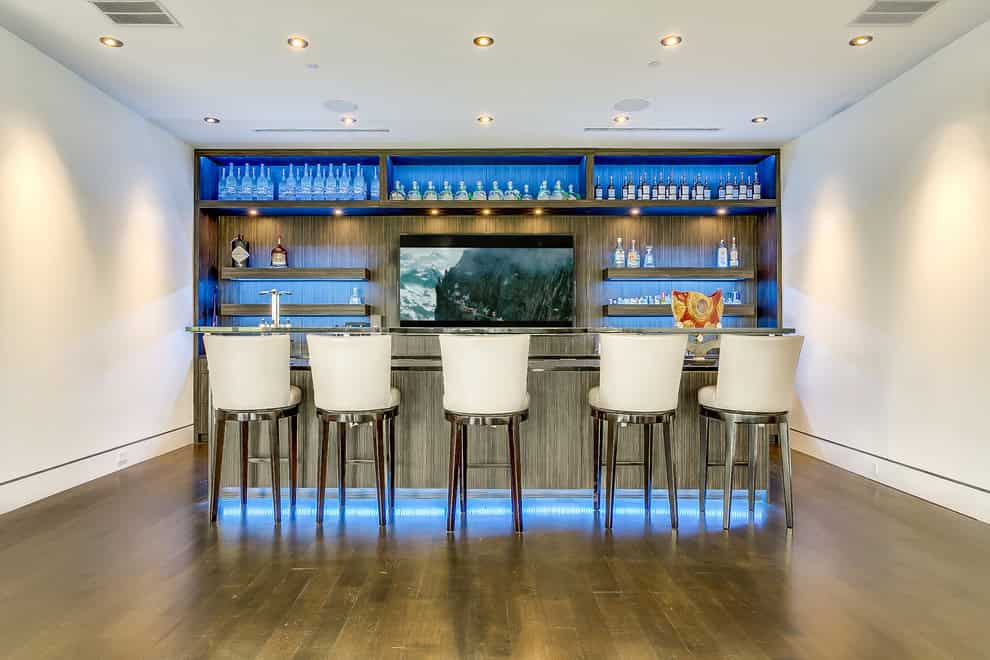
- Invest in Quality Barware: High-quality barware will last longer and make your cocktails taste better.
- Learn Basic Cocktail Recipes: Knowing a few basic cocktail recipes will impress your guests and make you a better bartender.
- Experiment with New Flavors: Don’t be afraid to experiment with new flavors and ingredients to create your own signature cocktails.
- Keep Your Bar Clean and Organized: A clean and organized bar is more inviting and enjoyable to use.
- Practice Safe Drinking: Always drink responsibly and encourage your guests to do the same.
- Consider Soundproofing: If your bar is near bedrooms, consider soundproofing to minimize noise.
- Add a Mini Fridge for Garnishes: Keep garnishes fresh and easily accessible.
- Personalize with DIY Projects: Add homemade bitters or infused spirits to personalize the bar.
- Create a Cocktail Menu: Offer a selection of signature drinks for your guests.
Conclusion: Cheers to Your Dream Home Bar!
Creating a home bar is an exciting project that can transform your living space and enhance your entertaining experience. By carefully planning your design, choosing the right materials and accessories, and stocking your bar with the essentials, you can create a space that is both functional and stylish. So, raise a glass to your new home bar and enjoy the many happy hours to come!
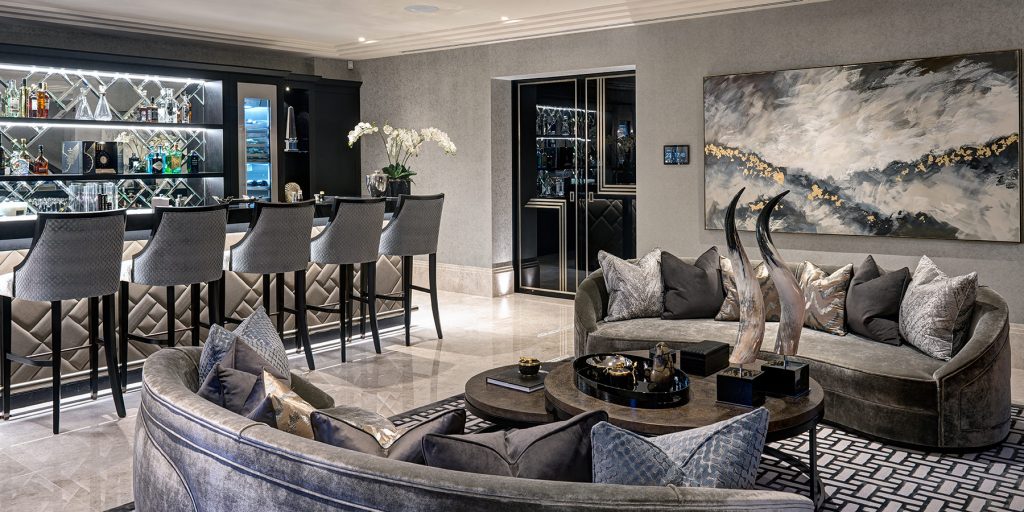
 Nimila
Nimila
